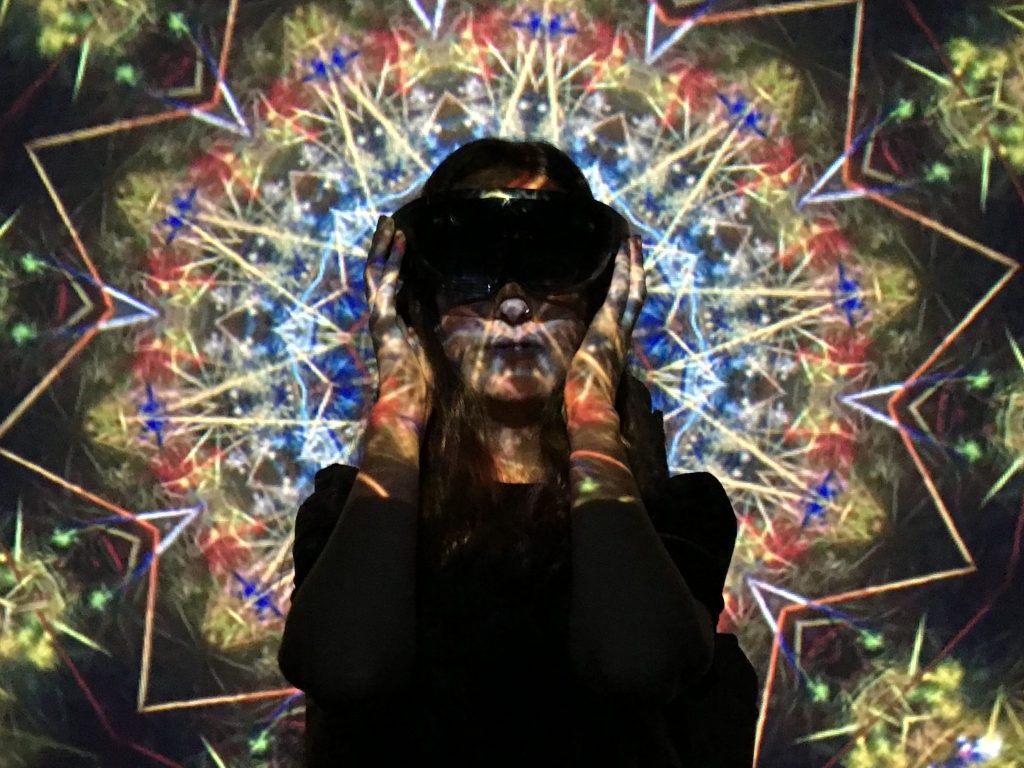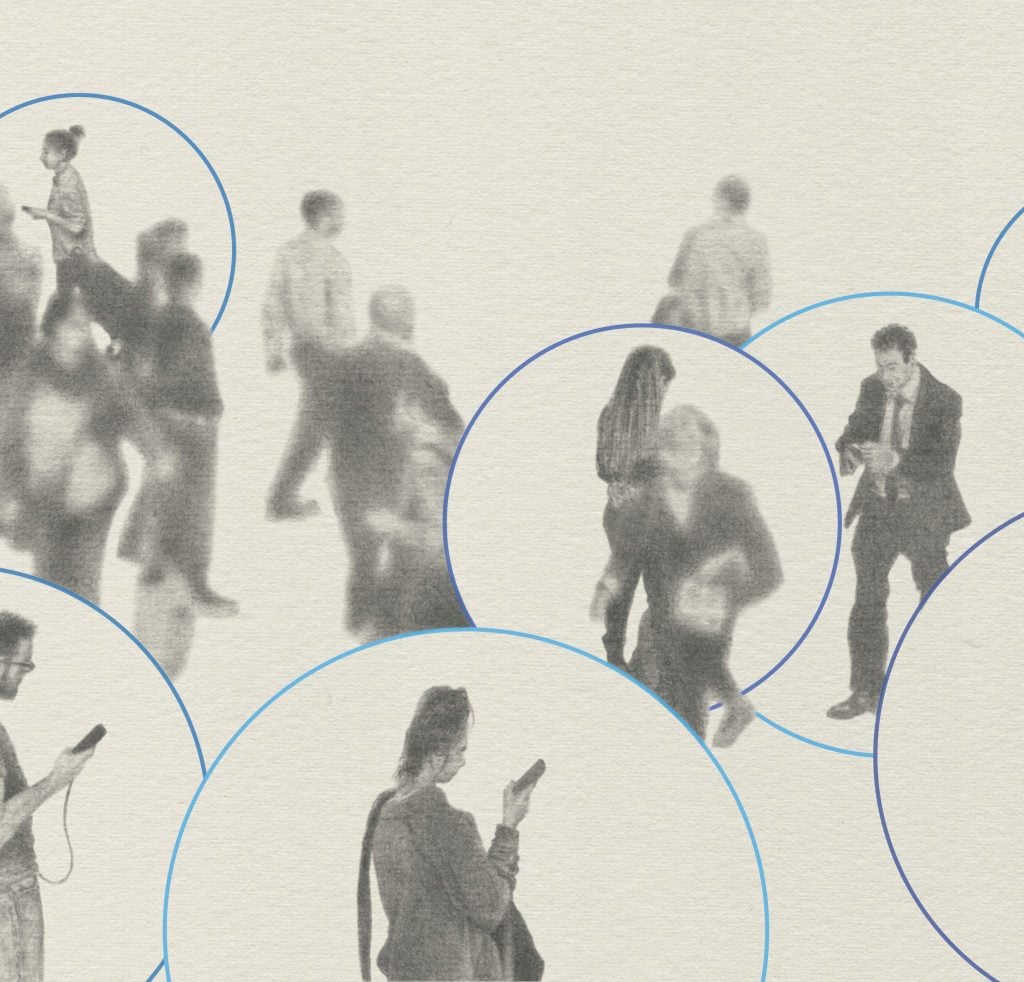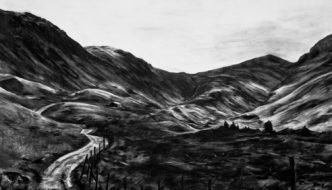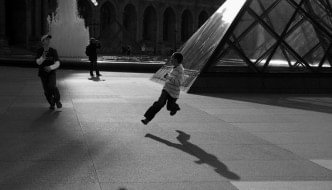“I can’t be talking to scientists and not have a clue!” – Gabriella Warren-Smith on curating
May 12, 2019

Gabriella Warren-Smith is a Liverpool-based curator on a mission to find out how new technology, or more specifically, handheld devices are affecting how we perceive art and, more broadly, how they they touch our lives (and brains). Over the past year, Gabriella has been organising events and writing essays for her project ‘Cognitive Sensations’ which focuses on the neurological and psychological effects of regular technology use and aims to spark discussions about these issues between artists, scientists and the public.
In our relaxed conversation, Gabriella talks openly about her path from architecture to curating, her new obsession with neuroscience books and the lessons she has learned during this project.
Maja Lorkowska: Tell me a little bit about about your background.
Gabriella Warren-Smith: I originally studied architecture but I wasn’t sure if I wanted to be an architect. I was really interested in what happened inside the building. I loved researching the social aspect of architecture and the way that buildings work.
At the time I was studying in Manchester and I went to visit the Whitworth Art Gallery. I was completely captivated by the amazing exhibitions and the use of space. The art I saw there went further than its traditional position on the gallery walls. The visitor’s experience was shaped by the design of the environment and the physical pathway of the visitor within the space was carefully considered.
So I thought, ‘I want to work in a gallery!’, because exhibitions seemed like a good way of creating experiences for people. That’s how I got into curating. From then on I started the well-known journey of volunteering and slogging away: art waitressing!
That’s such a good phrase!
That’s basically what you do, it’s like front-of-house for galleries. Once I got sick of art waitressing, I decided the only way to actually get proper experience is to do it yourself. I did internships for the Liverpool Biennial, I worked for the Bluecoat, but in those roles, there just weren’t many opportunities to be creative.
One day I was art waitressing and watching the visitors. Being in that environment every day I could tell that their phones were playing such an integral part of the gallery experience. It influenced how long they paused to look at something, whether they were looking at it at all, sometimes they weren’t reading the text panel and just taking a picture. The more I considered how our handheld devices are having such a large impact on our lives, I began to wonder if their effects were neurological.
How did your research formally begin?
I began with a book called “The Shallows” by Nicholas Carr. It’s all about the neurological effect of the digital age and how technology is changing our attention and memory. It was an amazing introduction into how the brain works. He’s a scientific writer rather than a scientist, but he has such a good way of drawing together all of this scientific research in a way that’s understandable for everyone. Afterwards it became a real addiction and I started collecting books on neuroscience.
I then did a course on neurobiology, trying to understand all of the books, because I thought, ‘If I’m going to turn this into an exhibition I can’t be talking to scientists and not have a clue!’ I don’t know how much it helped, but it was definitely a step in the right direction. I spent about half a year talking to artists, scientists and authors of these books, trying to form my own perspective. It is quite a contentious subject because we’ve not been living with this technology for long enough. As a curator I’m quite aware of the responsibility to not be didactic too, I needed to define the fine line between both sides of the argument.
It was all supposed to be leading to a massive exhibition in my head, that it would be like a Tate retrospective, and then the real world hit me! I realised that would be impossible.
In the last exhibition I worked on all of the artists were dead which, practically, meant that I had no one to pay and all the artworks already existed. This one was about such a specific subject related to the future, so all of the art I was discussing with the artists would be new commissions. I had no idea how much these kinds of things cost.
As my plan for a grand exhibition started to fade, it became more about organising events and finding ways of making the research public through conversation. I got in touch with THE CUBE, which is a space dedicated to neuroscience, technology and design. They agreed to work with me and the first event ‘Fields of Perception’ took place there. It was all about how technology affects our perception of space and about the relationship between the built environment and virtual reality.
The second talk focused on the subject of attention in the digital age and that was a lot more accessible to the audience. It’s something that everyone is interested in right now, and most people are quite curious about it because of their personal experiences. The third event, ‘Cognitive Conversations: The Artist’s Perspective’ took place at FACT Liverpool and involved artists and scientists talking about their views and projects which focused on the digital realm and handheld devices.

Oliver McAinsh
Why do you think it’s such a popular subject right now? Is it because we’re still getting used to having technology around?
I’d say the majority of people are so curious because they can can identify with it. Most of us are slightly addicted to it and most of us are aware of the social impact that it has on the way that we do or don’t interact with each other.
Then there’s also the fact that historically we do really fear new technologies and the way that they impact us. We might just be in one of those phases.
The thing that I find most interesting is the neurological process of neuroplasticity. When a baby is born they have all of these neurons in the brain, but the connections between them aren’t yet formed. As you grow older, your behaviours and actions form these connections, and so if you repeatedly look at your phone when you wake up, certain neurons will fire together through this unique connection.
It’s a little scary when you think about it like that. Other than learning about the basics of neuroscience and the artists’ research, what are your main takeaways from these events? Is there anything that you’ve learnt that you weren’t expecting?
It sounds obvious but the conclusion to all of the talks has been that as humans we are our own agents, so it’s up to us how much we interact with digital technology. I mean, it’s so obvious, but if you were to iron out the argument between someone saying “Oh God, it’s really terrible!” and someone else saying “Don’t be ridiculous” – that’s what’s standing in the middle, it’s completely down to the individual person.
Another takeaway is that it’s important to observe the language used around technology. I still do it myself by saying ‘technology’ but I actually mean specifically phones, tablets, laptops. Also, it’s not actually the technology itself but the companies behind them. It’s Google, it’s Facebook, they’re really the ones that are manipulating our behaviour and the way we’re thinking. The handheld devices are just a tool that we use to help ourselves, I don’t think it’s ever going to leave us or not be a part of our life now.
Now that you’ve done the project, do you feel that art is a good way of communicating these ideas?
Of course art is a great way of communicating ideas, and it’s a good start to communicating with a member of the public about the project itself, but I do find it quite challenging to convey my own ideas through an artwork which isn’t my own.
This is one of the biggest challenges I’ve found as a curator, and it’s something I intend to focus on through the next collaborative projects. I personally find writing to be the easiest medium for communicating my ideas and I discovered that through this project.
What’s the next step for you?
I’m thinking about doing a cognitive sensations PhD! I’ve not worked it out yet. This is what I need to make this decision on – what is my practice? I can’t do it from a neurological perspective because I’m not a scientist. There probably isn’t anyone in the arts who is looking at the neurological effect of digital technologies that affect art, but I don’t know if that’s the part I actually find the most interesting. It might be that it’s more about the exhibitions themselves and the physical and virtual spaces we inhabit. So I guess it’s all coming back to architecture!
Filed under: Art & Photography
Tagged with: architecture, art, digital, neuroscience, perception, Science, sensations, social media, technology, the cube



Comments